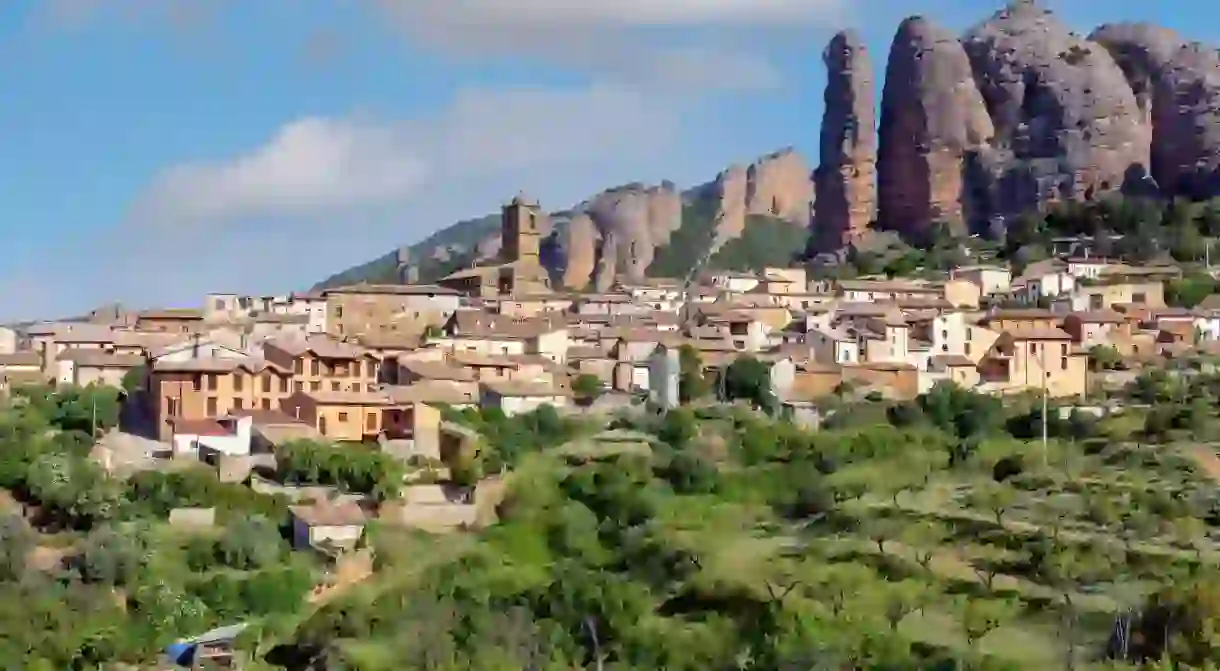Reasons to Visit Aragón at Least Once in Your Lifetime

The region of Aragón lies in the north-east of Spain, stretching up to the Pyrenees and down as far as the region of Valencia in the south. It’s a varied region, filled with mountains and national parks, amazing feats of architecture and historic medieval towns. Here are the reasons why you need to visit Aragón at least once in your lifetime. Did you know – Culture Trip now does bookable, small-group trips? Pick from authentic, immersive Epic Trips, compact and action-packed Mini Trips and sparkling, expansive Sailing Trips.
To see some of the grandest churches & cathedrals in Spain

Aragón is packed with some amazing pieces of religious architecture, from cavernous cathedrals to ornate Romanesque and Mudéjar churches. The star of the show is the Basílica de Nuestra Señora del Pilar, located in the capital of Zaragoza – a huge Baroque sanctuary. In the city of Huesca sits San Pedro El Viejo, one of the finest examples of Romanesque churches in Spain, while in Teruel you’ll find the gorgeous Mudéjar-style Catedral de Santa María de Mediavilla. Head to Tarazona to see the French-Gothic Catedral Santa María de la Huerta, filled with Renaissance artwork, and to Albarracín to see the 16th-century Catedral del Salvador.
To enjoy adventure sports in the Pyrenees
The very top of Aragón borders France and one of the best sections of the great Pyrenees – the Pyrenees National Park. This is not only one of the highest and most spectacular parts of the Pyrenees, but also one of the best for adventure sports. Here visitors can try everything from climbing and hiking to paragliding, skiing and canyoning.
To experience the Fiestas del Pilar
The Fiestas del Pilar are Zaragoza’s biggest cultural event event. The festival is held annually around October 12 and honours the city’s patron saint, the Virgen del Pilar. Festivities last for an entire week and feature parades, live music, theatre and fireworks. On the day of October 12, hundreds of people wearing traditional dress leave flower offerings at the Plaza del Pilar square.
To explore its underrated capital – Zaragoza
Zaragoza is Spain’s fifth-largest city, however it often gets overlooked in favour of smaller cities such as Malaga, Alicante or Granada. It’s actually a fascinating place to visit, filled with museums, historic monuments, ancient architecture and great restaurants.
To see fine examples of Mudéjar architecture
Aragón, unlike many other parts of northern Spain, is packed with Mudéjar architecture – in fact it is home to some of the finest Mudéjar buildings outside of Andalusia. One of the best is the Aljafería Palace, situated in Zaragoza – a fortified medieval fortress, decorated in Islamic motifs and intricate designs. Another place to see Mudéjar architecture is the town of Calatayud, which is filled with some of the best pieces in the whole of Aragón.
To visit its charming historic towns and villages
It’s not all about cities or countryside in Aragón, there are plenty of places where the two combine. There’s Cantavieja, studded with Gothic monuments and the ruins of old castles; Roda de Isabena, the smallest town in Spain to have a cathedral; the peachy-coloured Albarracín; and Sos del Rey Católico, a fortified town made of stone.
To learn all about one of Spain’s greatest artists – Francisco de Goya
One of the great Spanish artists, Francisco de Goya was born in the region of Aragón, in the small town of Fuendetodos. As well as visiting his Birth House and the Museum of Etchings, travellers can also see one of the best museums dedicated to him in Spain – the Goya Museum in Zaragoza. This museum features 15 of the painter’s most important works.
To marvel at the amazing Castle of Loarre
Aragón’s Castle of Loarre is one of the most magnificent castles in the country. The castle was built in the 11th century by King Sancho Ramírez I of Aragón, on the remains of an old Roman fortress. It was used as a royal palace and later Augustinian monastery. Today, it’s known to be one of the most important Romanesque fortresses in Spain. Inside, visitors can also see the 12th-century Romanesque church of Santa María.
To discover its natural side
Besides the Pyrenees, Aragón is dotted with natural parks, forests and swathes of countryside. These include Moncayo Natural Park; world heritage-listed Ordesa y Monte Perdido National Park, the Sierra y Cañones de Guara Natural Park, known for its birds of prey; and the Valles Occidentales Natural Park, with its many rivers and a vast lake.
To see some of the finest Roman ruins in the country
There are a few places in Spain where you can see remnants from the Roman occupation of the country. One of these is Tarragona in Catalonia and another is Zaragoza and the region of Aragón. In Zaragoza you can see the remains of a great Roman theatre – the Teatro Romano de Caesaragusta – as well as a number of archaeological museums, showcasing artefacts and ruins of the public baths and the forum. Other places to visit include the Roman Mausoleum of Fabara and the Roman aqueduct of Albarracín-Cella.
To taste its cuisine

Aragón, like many of Spain’s regions, has a unique cuisine and rich gastronomic heritage. It’s mainly based on thick stews, packed with both meat and vegetables. Some of the things you should try while you’re here include the asparagus from the banks of the River Ebro, the onions from Fuentes and boiled borage leaves. The fruit is also amazing from this region, particularly the pears, apples, cherries, plums and peaches.













